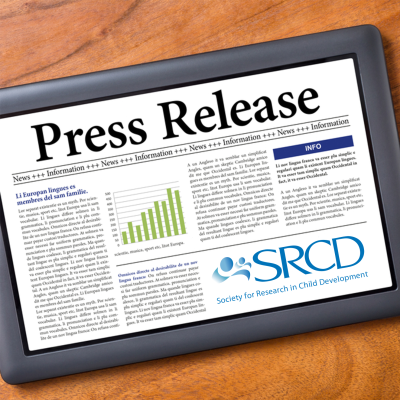Study of Transgender Preschoolers Assesses Preferences and Identity
PRESS RELEASE / CHILD DEVELOPMENT: Embargoed for Release on April 25, 2017
Gender may be the earliest identity and social category to emerge in development, research suggests, and acquiring knowledge about one’s gender is considered a critical part of early childhood development. In one of the first examinations of early gender development among transgender preschoolers, a new study has found that these children were just as likely as nontransgender children to have preferences associated with their gender, and to have as strong and clear a sense of their gender identity.
The study was conducted by researchers at the University of Washington and is published in the journal Child Development.
“An increasing number of transgender children—those who express a gender identity that is opposite their sex—are transitioning socially, which means they use pronouns, names, and clothing associated with their identified gender in everyday life,” notes Anne A. Fast, a Ph.D. candidate at the University of Washington and the study’s lead author. “In this study, we asked whether these children differed from their gender-typical peers on basic tasks related to gender development at an early age.”
The study looked at three groups of children: 36 transgender 3- to 5-year-olds, 36 cisgender 3- to 5-year-olds (children whose gender identity and the sex they were assigned at birth are the same), and 24 siblings (also ages 3 to 5) of transgender or gender-nonconforming children. Children came from across the United States, primarily identified as female, were primarily White, and were from a range of economic backgrounds.
The researchers focused on the preschool years because this is when gender begins to strongly motivate children’s preferences (e.g., for toys and clothing) and behavior, and when children’s understanding of gender stability emerges. It is also the youngest age gender-nonconforming children make the social transition to present in everyday life as a member of their identified gender.
In the study, the researchers asked children to complete gender development tasks to gauge their understanding of gender constancy, their preferences regarding gender, and their beliefs about gender. Children were also asked what they feel like they are “on the inside,” in their minds, thoughts, and feelings.
The transgender children did not differ from children of the same gender in the control group or the sibling group on preferences, behavior, stereotyping, and identity, the study found. For example, transgender girls (who were born as boys and identified and lived as girls at the time of the study) liked dolls and pink dresses, and preferred female friends as much as cisgender girls and sisters of transgender children did.
However, researchers found differences among the groups in children’s beliefs about the stability of gender. While children in the control and sibling groups tended to say that their gender as a baby and their gender as an adult matched their current gender, children in the transgender group tended to say that their gender as a baby was different than their current gender, but that their gender as an adult would be the same as their current gender. Considering stability of gender in others rather than in themselves, while children in all three groups tended to believe that most other people’s gender in childhood remained stable through adulthood, transgender children and their siblings were less likely than cisgender children to believe that everyone’s gender was stable. And they occasionally indicated that someone’s gender could change between childhood and adulthood.
Given the small size of the study sample, the authors caution against generalizing from their results. However, they also note the importance of considering transgender children: “We are increasingly aware that there are individuals who identify early in development as a gender other than the one aligned with their sex at birth,” notes Kristina R. Olson, associate professor of psychology at the University of Washington, the study’s senior author. “Such children should be included in work on basic gender development to expand our knowledge of gender developmental experiences and strengthen theories of gender development.”
Support for the research came from the National Science Foundation and the Arcus Foundation.
###
Summarized from Child Development, Gender Development in Transgender Preschool Children by Fast, Anne A., and Olson, KR (University of Washington). Copyright 2017 The Society for Research in Child Development, Inc. All rights reserved.


